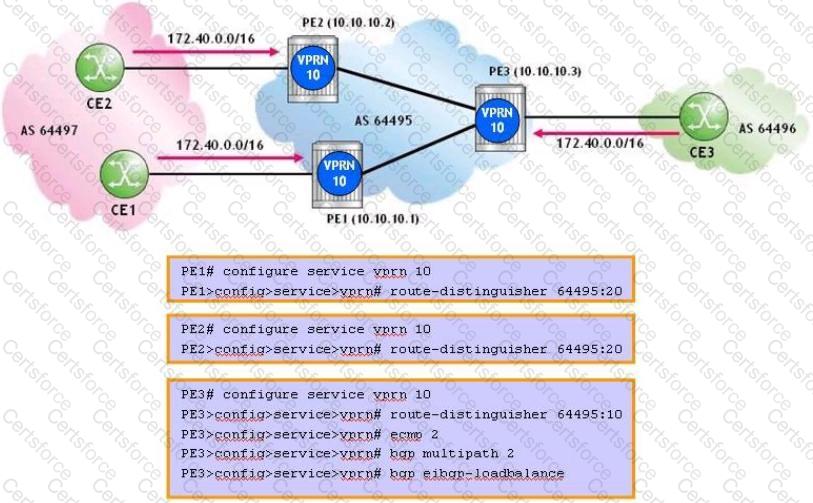What is the DA address used for in the Ethernet Header?
Which of the following is NOT a feature of the IEEE 802.3ah EFM standard?
An MC-LAG is configured with default parameters. When a failed interface recovers, the active link reverts to the restored interface.
What is the default fdb size for a VPLS service?
Click on the exhibit below.

Assume there are two VPLS services configured on the MDU. How could load-balancing be achieved when using Active/Standby pseudowires?
A LAG is configured with LACP passive mode enabled. When will LACP packets be sent?
If Route Reflector 1 (RR1) is used for Internet routes, and Route Reflector 2 (RR2) is used for VPN routes, which of the following is TRUE?
Click the exhibit.

Based on the displayed configuration, which routes does PE3 place in the VPRN 10 routing table?
Which of the following about inter-AS model AVPRN is TRUE?
Which of the following statements are true regarding P devices in an MPLS VPRN? (Choose two.)
You are configuring a VPLS spoke termination to a VPRN on an Alcatel-Lucent 7750 SR. If LDP is used for all transport tunnels, what type of sessions are established by the VPRN PE router that is configured with the spoke termination?
Which of the following about Carrier Supporting Carrier (CSC) VPRN is FALSE?
On an Alcatel-Lucent 7750 SR, which CLI command displays the Route Target(s) associated to a prefix?
Which of the following is not a valid BGP design for a network provider supporting VPRNs?
Click the exhibit.

Assuming that the as-override command is used, what is the most likely location of prefix 10.1.2.0/24?